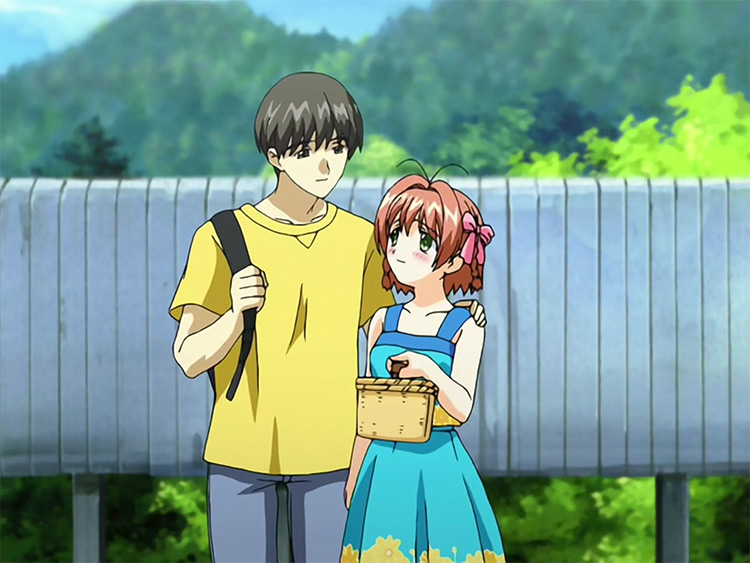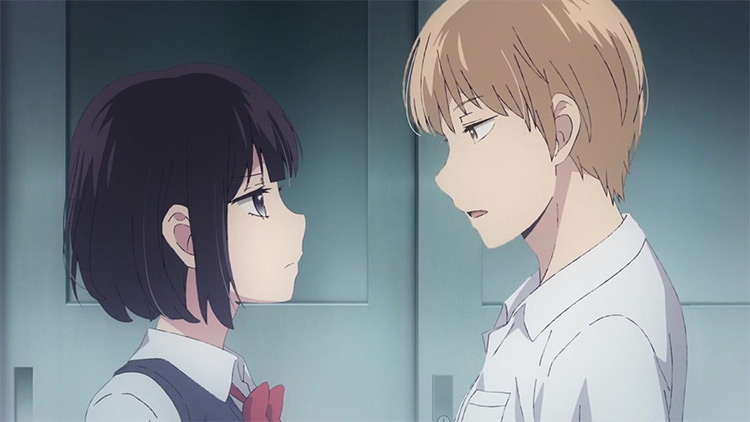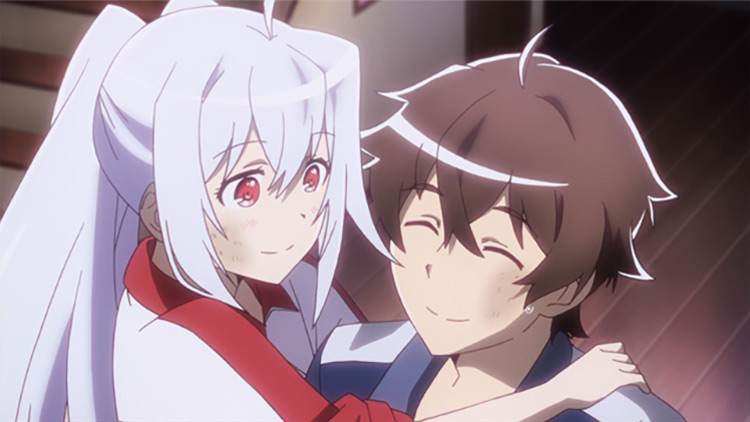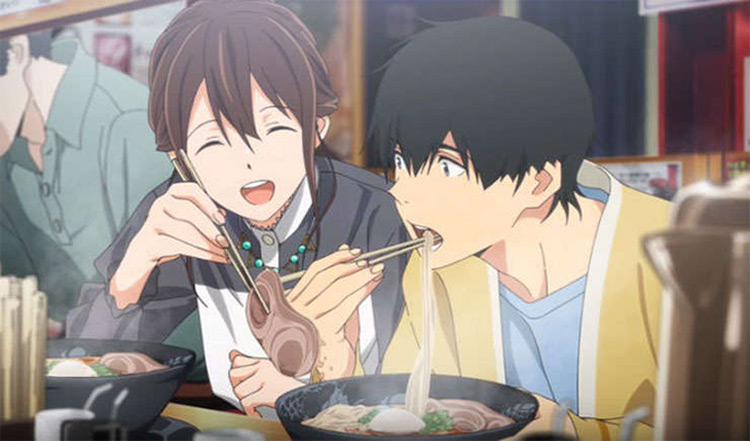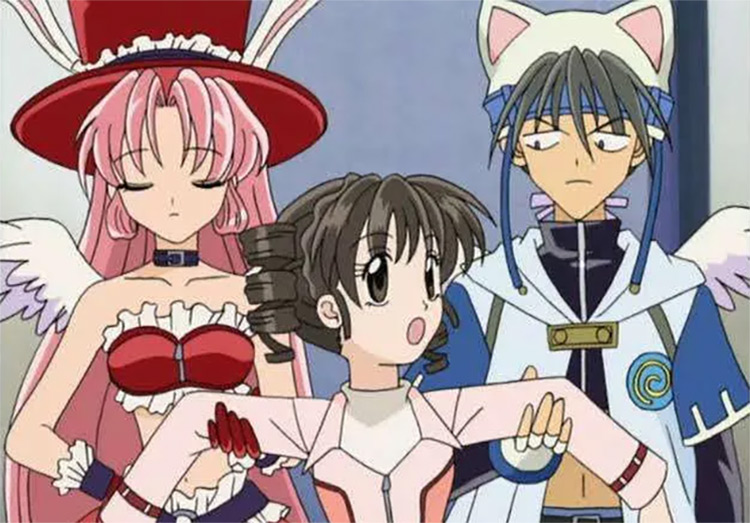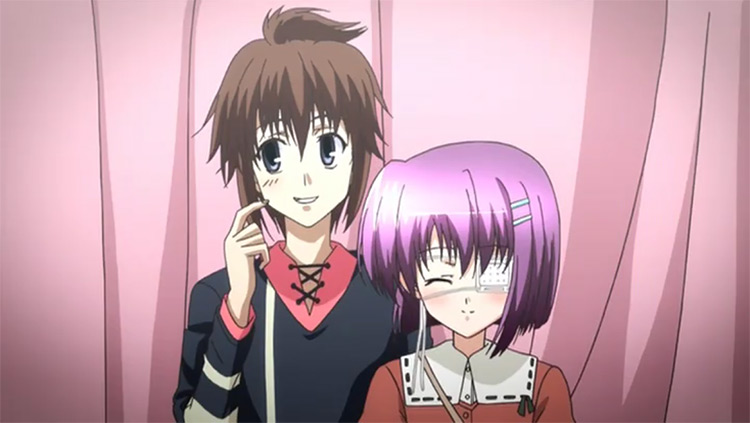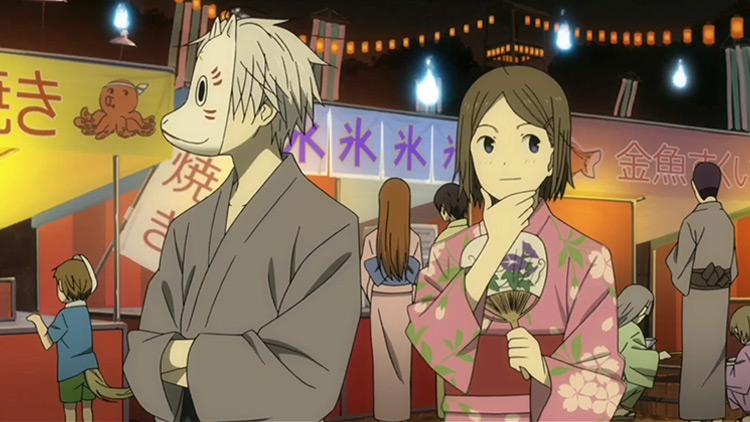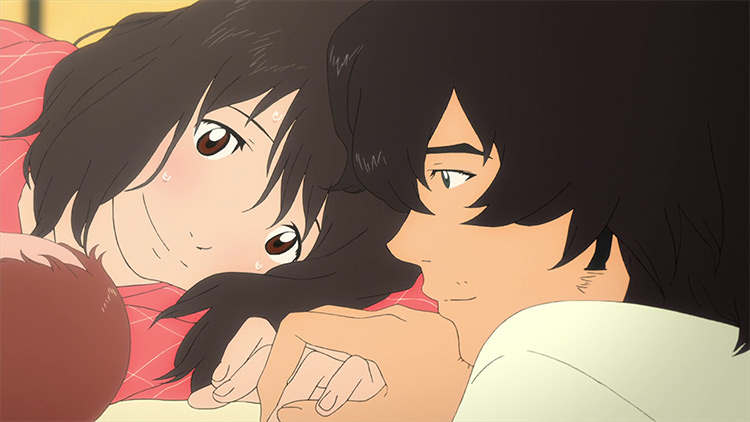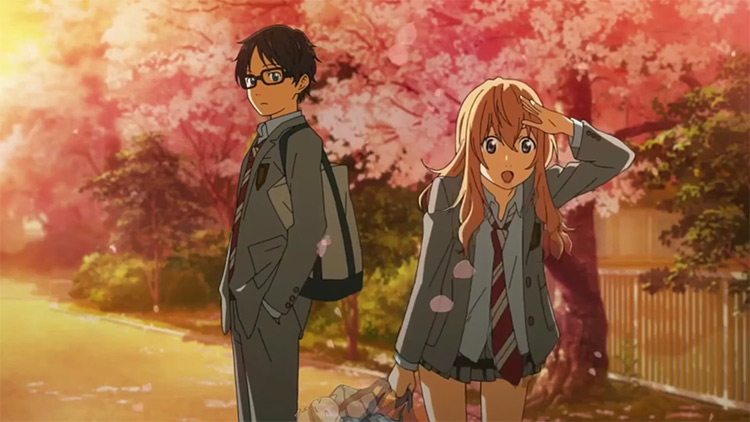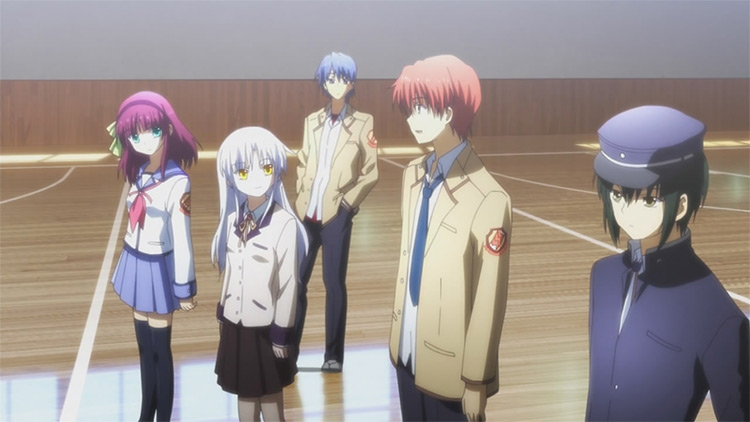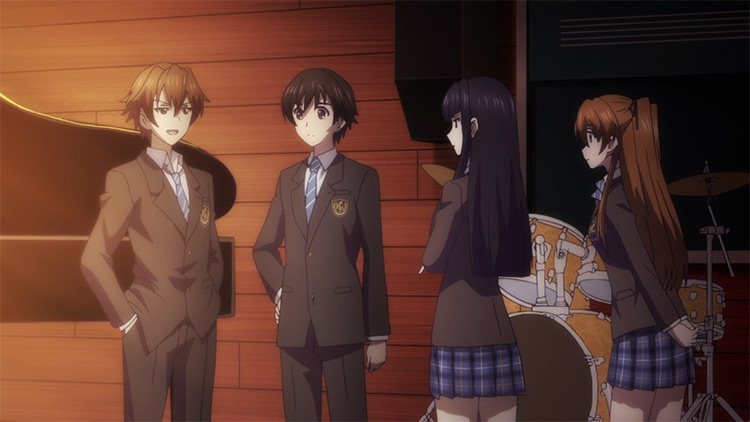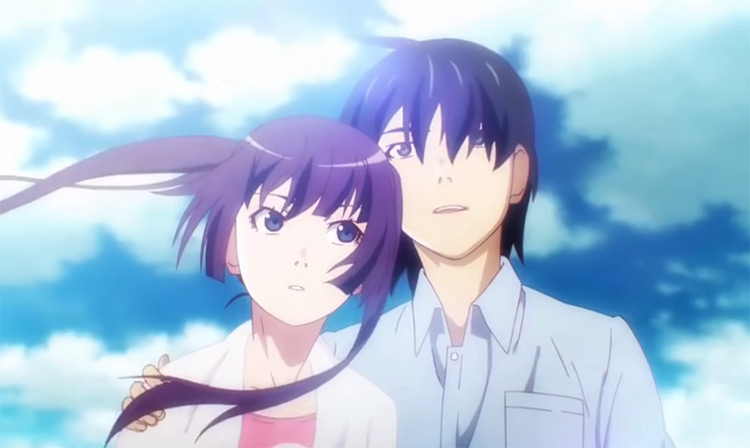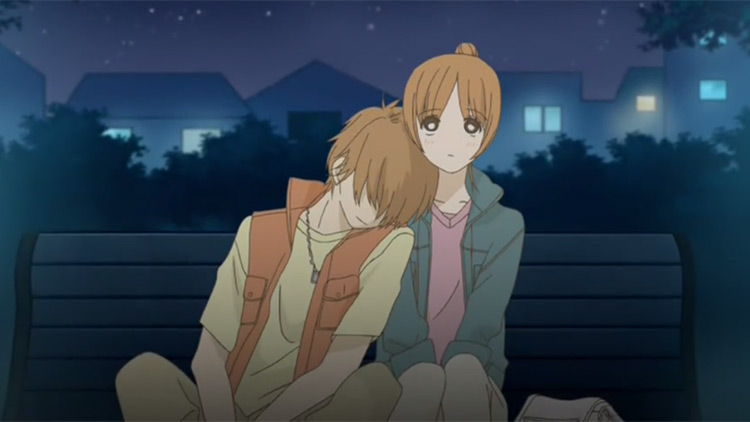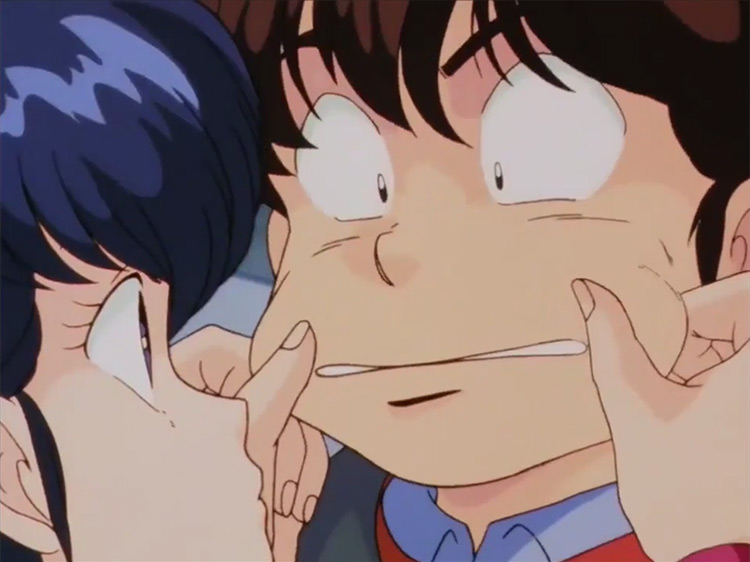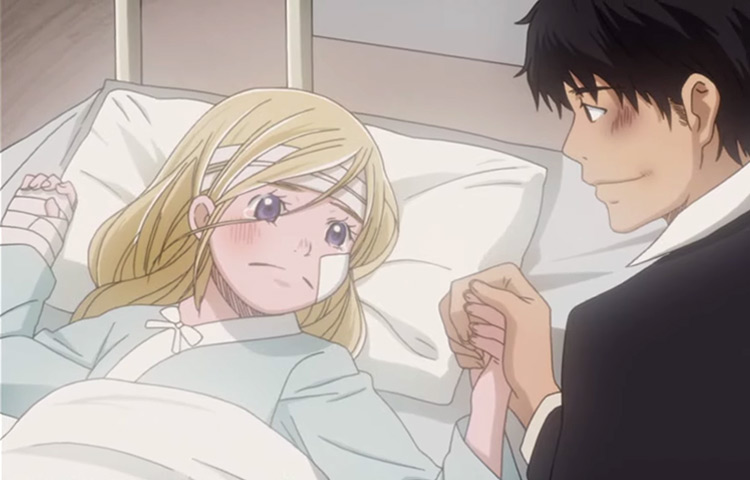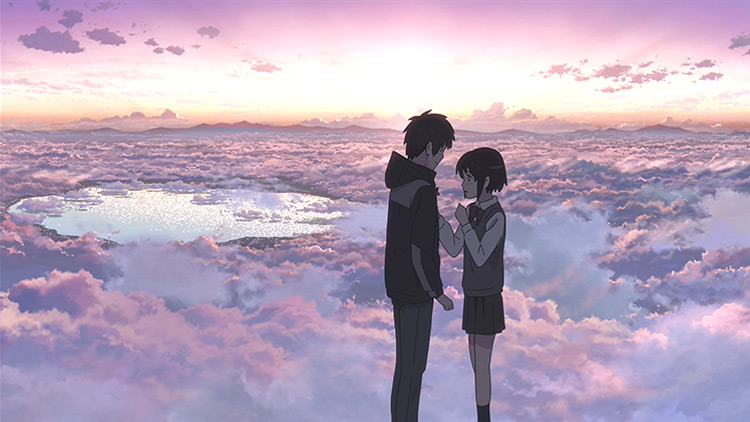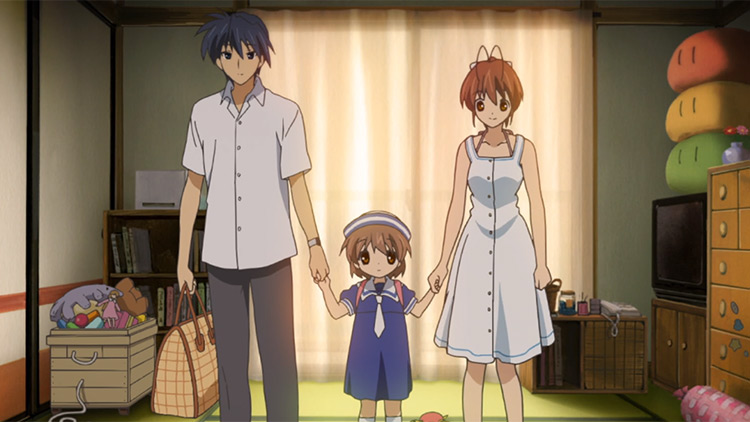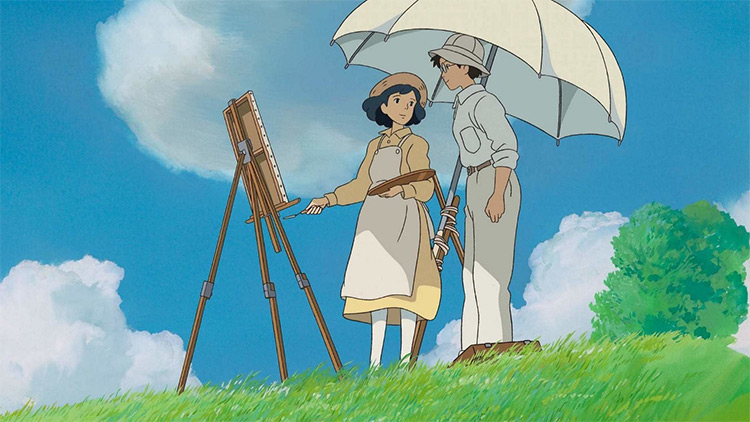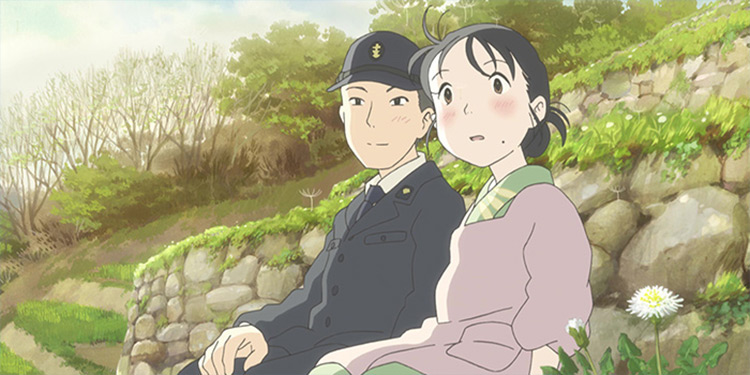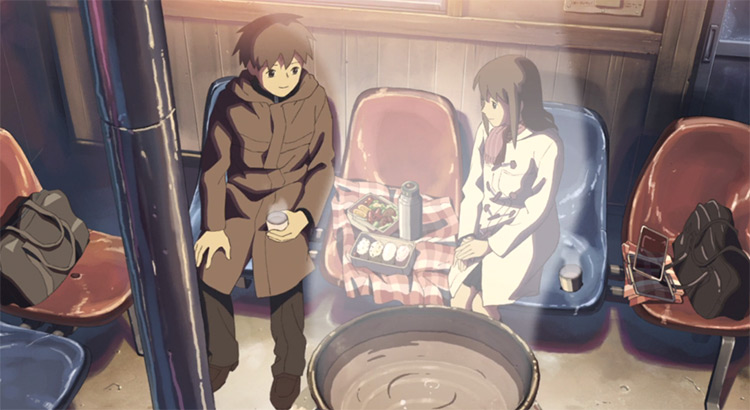But what if you’re specifically looking for romance anime that make you soft and eager to eat ice cream all by yourself? Whether you’re stressed and need an emotional release or you just want a good cry, check my picks for the most sob-inducing romance titles in anime. They may have lighthearted scenes, but their core appeal lies in their soul-stirring and devastatingly sentimental sequences.
20. Rumbling Hearts
In just 14 episodes, this TV series explores the intricacies of friendship, family, betrayal, life, love, and tragedy. Also known as The Eternity You Wish For, Rumbling Hearts captures the complex dilemma of Takayuki Narumi and the two women he fell for. Mitsuki Hayase is in love with Takayuki, but she’d rather keep her feelings to herself. Worse, she’s the catalyst for Haruka Suzumiya and Takayuki ending up together. It all seems perfect for Haruka and Takayuki until the former gets into an accident and suffers from a coma. Upon waking up, Haruka thinks that not much time has passed and that she’s still with Takayuki. The truth, however, is that three years have passed — and her ‘current boyfriend’ is already with Mitsuki. To many viewers, Kimi ga Nozomu Eien is either a masterpiece or utter trash — there’s no in-between. Regardless of how you feel about it, this romantic drama is a great example of what early 2000s anime had to offer.
19. Scum’s Wish
Despite being released 13 years after Rumbling Hearts, Kuzu no Honkai also offers an equally painful and dramatic offering of conflicting relationships. Instead of anterograde amnesia, the culprit of questionable decisions among the cast is their desire for emotional reciprocation. Hanabi Yasuraoka and Mugi Awaya look like the ideal high school couple. However, they’re not in love with each other at all. These MCs are only together because they’d rather enjoy physical connections than stay single. But why can’t they be with the people they love? As it turns out, their crushes—teachers Narukami Kanai and Akane Minagaw—ended up together. Their situations are already miserable, right? Wait until you get the full extent of the chaos when others like Sanae Ebato and Noriko Kamomebata come into the fray with their own delusions and desperation.
18. Plastic Memories
Isla is a beautiful twin-tailed Giftia. Thus, she’s a superbly human-like android. But like other machines, she can’t live forever. Her remaining time on Earth is limited to 2,000 hours — that’s just over 80 days. She knows what lies ahead of her, which is why she’s a bit withdrawn toward others. But the 18-year-old Tsukasa Mizukaki is developing feelings for Isla — and she feels the same way. Plastic Memories proves that an otherwise predictable show can still greatly entertain and emotionally affect its viewers. At its core, it’s all about being truthful to your heart and letting your feelings unfold to that special person regardless of how things turn out.
17. I Want to Eat Your Pancreas
I Want to Eat Your Pancreas piqued my interest because of its title. Thankfully, I knew early on that this was a lovely tearjerker and not a graphic horror anime. Similar to Plastic Memories, this movie has no big surprises if you’ve had your fair share of romantic dramas. The MCs are a socially withdrawn bibliophile (Haruki Shiga) and a girl with a terminal disease (Sakura Yamauchi). From their descriptions alone, you can see the amusing irony in how they perceive life. Haruki is highly disinterested in everyone else while Sakura is full of energy and adored by many. Eventually, they cross paths and better understand what it means to live.
16. Searching for the Full Moon
How can this anime not make you cry when it has an uber-romantic title? Full Moon wo Sagashite is a 53-episode marvel from Studio Deen. Premiering way back in 2002, it’s about two wide-eyed children and how life (more often than not) gets in the way of one’s dreams. Mitsuki Koyama is a 12-year-old girl aspiring to become a singer one day. On the other hand, her friend (and crush) Eichi Sakurai said he’ll become an astronomer. However, life gets in the way (of course). Yet there’s a sliver of hope: The shinigami have agreed to help fulfill her promise no matter how futile it seems. How will it all work out? There are a lot of revelations (and tragedies) here that will melt and break your heart, but the journey is 100% worth it.
15. ef: A Tale Of Memories
Released 15 years ago, ef: A Tale of Memories isn’t exactly balanced in its storytelling and execution. The first two chapters featuring Hiro Hirono, Miyako Miyamura, Kei Shindou, and Kyosuke Tsutsumi are fine. In contrast, the final chapter starring Renji Asou and Chihiro Shindou elevates the series to new heights. Renji often visits a deserted train station after school. This is where he spots Chihiro Shindou, a peculiar and quiet girl who has a patch on her left eye. Over time, he learns that she has anterograde amnesia (yes, just like in Rumbling Hearts), preventing her from finishing her novel. Being the book lover he is, Renji opts to help Chihiro fulfill her dream. However, her fictional story may hold more emotional weight and personal significance than Renji initially thought. The ending to their own tale is arguably perfect. And if you like their chapter, you should check the sequel ef: A Tale of Melodies.
14. Hotarubi no Mori e
Otherwise known as The Light of a Firefly Forest, this 45-minute film proves that a lengthy runtime isn’t essential to bring out all the feels. Hotaru Takegawa was a young girl when she first met a supernatural entity called Gin. She was lost in the old mystical forest and it was him who helped her find her way back. They become good friends, but the two cannot ever touch because doing so will cause Gin to vanish forever. Despite this predicament, Hotaru proceeds to spend her succeeding summers with Gin. Yet is there really a future for them? Hotarubi no Mori e is a standout iyashikei movie that effortlessly calms the senses. Still, it’s not afraid to remind everyone that love cannot overcome all obstacles, especially when spiritual powers are at work.
13. Wolf Children
Ookami Kodomo no Ame to Yuki is a multi-award-winning masterpiece from Mamoru Hosoda, the same brilliant director behind Summer Wars and The Girl Who Leapt Through Time — and it’s his most solemn work to date. Wolf Children starts with a fateful encounter between Hana and Ookami in college. Although Ookami is neither a student nor entirely human, Hana’s feelings for him don’t falter. In contrast, it blossoms until they become a happy family with two adorable kids. Unfortunately, Hana’s quaint but lovely new life stops to a halt when Ookami passes away, leaving her to take care of Yuki and Ame. The single mom of two young werewolves is forced to relocate from the city to a rundown but secluded house in the countryside. It’s here where Hana copes with the loss of her dearly beloved while Yuki and Ame grow up and realize just how different they are from ordinary humans. It’s a peaceful film with a lot of nature and rain. But the social issues it alludes to and the relatable pain of moving on will keep you thoroughly engaged.
12. Your Lie in April
Shigatsu wa Kimi no Uso skyrocketed in acclaim and popularity even before its second half. Its character designs and musical performances—along with other climactic sequences—were detailed and stunning. Yet these creative and technical aspects that A-1 Pictures put so much effort into were all to give justice to the focal point of the series: Kaori Miyazono and Kousei Arima. These MCs are powerhouses in classical music. But the series goes beyond their gorgeous violin and piano performances to illustrate and examine their battles in life that shape and influence their music. While Kaori often wears a big smile on her face, she’s not in her best physical condition. Furthermore, Kousei can’t perform well on the stage due to trauma. From young love and childhood friends to white lies and the fragility of life, Your Lie in April is chock-full of developments and subject matter that will pierce your soul.
11. Angel Beats!
Jun Maeda is a master when it comes to tear-inducing anime — but don’t think that Angel Beats! isn’t drenched in melodrama. On the contrary, it’s packed with instant-classic gags and one-dimensional yet unfailingly hilarious people like T. K. and Takeyama. The series also features incredulous fights, particularly whenever Yuri Nakamura and the rest of Afterlife Battlefront deal with Kanade Tachibana. But as early as EP 03 when Masami Iwasawa’s background and future unfold in quick succession, Angel Beats reveals its sentimental prowess. You’ll still burst out laughing frequently after that episode. However, you’ll also constantly get a lump in your throat whether due to Hideki Hinata and Yui or the unforgettable climactic sequence in the final EP.
10. White Album 2
Love is a game to many people, especially among your standard MCs in a teen romance anime. But is there always a winner? In White Album 2, love can have no victors — only losers. I’m not saying that the MCs are boring or completely hopeless in love. Haruki Kitahara, Setsuna Ogiso, and Kazusa Touma are appealing individuals. They have great chemistry as friends and band members. However, their different approaches to satisfying (or hiding) their burgeoning desires have consequences that will forever tarnish their once-treasured bonds with one another. The opening lines in EP 01 hint at the looming trainwreck, but I still wasn’t prepared for how intense the fallout would be. On the bright side, it has an amazing OST that captures the emotional rollercoaster ride in music form.
9. Bakemonogatari
The Monogatari franchise is filled with questionably odd poses and interactions that are exceptionally well illustrated and animated by Shaft. Beyond the odd erotic moments are heartwarming moments and priceless stories. In Bakemonogatari, you’ll meet the beautiful and purple-haired Hitagi Senjougahara. She doesn’t want anyone to get close to her at all costs as if she’s a special-grade tsundere anime girl. In reality, Hitagi suffers from a supernatural disease that renders her weightless. Koyomi Araragi learns her secret by accident and decides to find a cure. I won’t reveal anything more, but here’s a hint to how emotional you’ll get: To this day, Kimi no Shiranai Monogatari by supercell is still regarded as one of the best ending theme songs in anime.
8. Bokura ga Ita
Bokura ga Ita is a blast from the past for sure. But in all honesty, it’s still one of my favorite romantic dramas in anime history. Nanami Takahashi and Yano Motoharu are adorable together, especially when they take baby steps in dating and physical intimacy. Yet their present happiness and genuine love are haunted by a tragic previous relationship, one that significantly affects how other people in Yano’s life (namely, Yuri Yamamoto and Masafumi Takeuchi) perceive his new girlfriend. There’s no limit to how many times I can watch all 26 episodes; knowledge about what happens in the anime doesn’t reduce the emotional impact whatsoever. Its minimalist closeup shots are appropriately quiet yet bittersweet — and the OST is noteworthy too. I recently reread the final chapter of the manga after many years. I’m certain that fans young and old alike will cherish and cry over the anime adaptation if and when a faithful continuation is announced.
7. Maison Ikkoku
Similar to Honey and Clover, this series from 1986 has a more mature ensemble cast. Apart from the 20-year-old Yusaku Godai and 22-year-old landlady Kyouko Otonashi, the boarding house has older tenants that make it raucous and eccentric. But the heart of the series is undoubtedly the main couple. Yusaku is indecisive (and quite perverted) while Kyouko is still learning to navigate life after her marriage ended abruptly when her husband died. The two have romantic chemistry, but they must first overcome their personal troubles. Otherwise their relationship will only serve to compensate for their respective shortcomings. In its sprawling 96-episode run, Maison Ikkoku cemented itself as one of the finest romance seinen ever, brimming with valuable life lessons, outrageous yet relatable sequences, and some of the best character development in anime.
6. Honey and Clover
There’s nothing wrong with romance anime set in high school. But the simple act of shifting the setting to college makes Honey and Clover more special as it introduces personal issues that older viewers can relate to. For example: Did you question your chosen course when you were in college? Have you felt insecure when your university buddies seemingly knew exactly what they wanted to do in life after graduation? Yuuta Takemoto doesn’t know which career path to take. In the field of romance, he’s not doing that well either. He’s afraid to confess to the cute and exceptionally artistic Hagumi Hanamoto — and he probably won’t like her answer anyway. Featuring five college friends, the two-season Honey and Clover embraces the colorful and tumultuous phase of young adulthood. They fall in love, break up, disappear, face their flaws, deepen their bonds, and find their purpose (and themselves in general) by getting lost.
5. Your Name.
Makoto Shinkai became a household name around the world with the release of Kimi no Na wa. in 2016. It broke records in Japan and other countries with each passing month while also making the Radwimps a chart-topping band. But why did I and many of my relatives and friends cry over this blockbuster movie? I’ve seen Shinkai’s earlier films. The character designs, sci-fi and supernatural elements, and outstanding backgrounds here are not new to me. But that’s exactly it: Apart from Your name. being a showcase of the director’s signature strengths, the ending is a surprising antithesis (and a love letter) to another movie of his all the way back from 2007. Shinkai has always been fascinated by the vivid lives of young people and concepts like distance and connection. Here, he goes all out for everyone to witness — and the result is a modern masterpiece.
4. Clannad: After Story
Tomoya Okazaki wasn’t the role model student in Clannad. He was more of a delinquent, to be honest. But once After Story comes around, he’s already more appreciative of both family and friends. Life after graduation was promising: He landed a humble but honest job as an electrician. Plus he just married his girlfriend Nagisa Furukawa — and they’re expecting a child. However, life isn’t as clear-cut as people want it to be. Nagisa dies after giving birth to Ushio. Tomoya becomes unable to take care of their child and asks other folks to raise her. He suffers from five years of depression. Life even refuses to give him a break when he welcomes Ushio back into his life. If you loved Jun Maeda’s Angel Beats, you’re going to absolutely bawl once you proceed from Clannad to this widely revered sequel. After Story highlights the importance of enduring love when life hits hard and takes away those you’ve chosen to spend the rest of your years with.
3. The Wind Rises
Before Hayao Miyazaki got out of retirement to work on a new animated film (How Do You Live?) set for a 2023 release, The Wind Rises was regarded as his last movie. Interestingly, the film is adapted from the Ghibli co-founder’s manga, which in turn had story elements from an old novel (Tatsuo Hori’s Kaze tachinu) and the biography of Jiro Horikoshi. It mainly centers on Jiro’s lifelong dream of making aircraft that he and his nation would be proud of. At the same time, it devotes part of its runtime illustrating the love between him and Naoko Satomi, the girl he first met when the Great Kanto Earthquake struck. While Jiro worries about what humanity might do with his planes, Naoko grapples with her deteriorating health and the knowledge that she barely has enough time to be with her beloved husband. As the recipient of awards in Japan and across the world, this brave anti-war film would’ve been a fitting sendoff for Miyazaki if he actually chose not to come back.
2. In This Corner of the World
Now and then, I think back to 2016 when modern anime classics (and blockbusters) like your name. and Koe no Katachi premiered. Each time, my mind and heart think of In This Corner of the World as the most important Japanese animated film from that year. Some will argue that this is a war film rather than a love story. But I disagree. This is about love and life in a time of death and destruction — about how ordinary people caught in a historic tragedy persevere and cling to their aspirations. Suzu Urano, Tetsu Mizuhara, and Shusaku Hojo are capable of love and want peaceful lives. But they’re all entangled in not only geopolitical conflict but also gender roles and cultural aspects such as arranged marriages. Every time I hear Kotringo’s Kanashikute Yarikirenai (I Can’t Bear How Sad It Is), I fondly remember this movie and become more grateful for the weary yet pure love and necessary grief it imparts to viewers. Kono Sekai no Katasumi ni is an immaculate film that refuses to glorify war and beautifully remembers the lives lost and forever affected by the Second World War. Fumiyo Kono created an amazing manga and I cannot wait for what director Sunao Katabuchi has in store.
1. 5 Centimeters Per Second
The 2007 Shinkai film that I hinted at earlier as the opposite of Kimi no Na wa. in terms of its ending is none other than Byousoku 5 Centimeter. Its first minute alone makes my heart feel heavy: The young Takaki Toono and Akari Shinohara are talking about seeing cherry blossoms again. A train passes by before he can catch up to her, temporarily keeping them apart. Then the first piano keys hit and the first title card appears. From that moment onward, it’s a breathtaking journey that nonetheless reaches its conclusion — and it’s not what either of the childhood friends could’ve predicted (nor wanted) all those years ago. I’ve seen this three-part romantic drama so many times now, but the magic never fades. There are lots of quiet and surreal scenes where the emotional and physical distance between the characters is palpable, especially in Cosmonaut. When you do hear their dialogue and internal monologue, they’re raw, lyrical, and can be heartwarming or painfully honest. And just like how In This Corner of the World had Kotringo while your name. got Radwimps, this movie has Masayoshi Yamazaki’s One More Time, One More Chance, a heart-rending classic work of art in its own right.
